After two and a half years, the Global Tomato Congress was held again on May 24. Tomato specialists from the entire supply chain traveled to the Dutch city of The Hague. The approximately 350 visitors were given a full-day program covering a wide range of topics, from technology and plant breeding to marketing and trade.
Anyone not fluent in Dutch could still follow the keynote presentations in English using a headset. The search for new markets was one of the most important topics discussed on the main stage, especially now that the market has been tested by the coronavirus pandemic and the energy crisis.
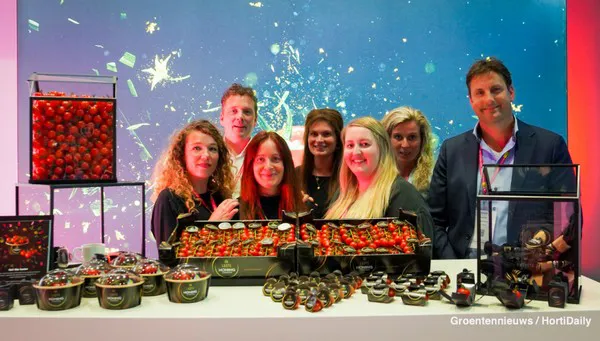
The team of the Dutch company Looye presenting their Honingtomaten (honey tomatoes). The combination with chocolate was tasted and talked about by many of the visitors of the Tomato Congress. Click here to see the full photo report
Winter season 2022/2023
For the coming winter season, one of the biggest questions was where the tomatoes are going to come from if many growers in northwest Europe reduce their growing area due to the high energy costs. David Herzog of Rijk Zwaan predicted that in the next few years, there will be tomatoes from many different countries on supermarket shelves. The challenge for breeding companies is to offer the right varieties for all these countries so that the quality of the tomatoes remains stable throughout the year.
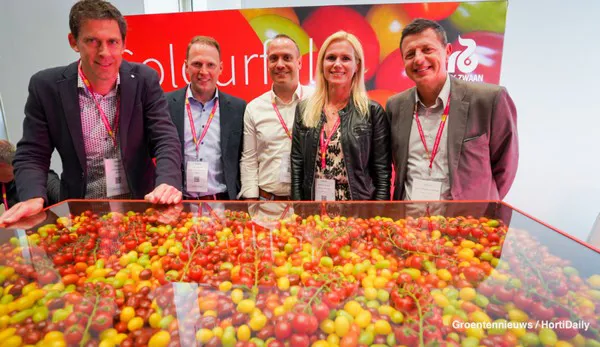
More than enough tomatoes from breeder Rijk Zwaan. Click here to see the full photo report
ToBRFV
As in the 2019 edition, there was a lot of talk about the tomato rugose virus (ToBRFV). Jan Engelen, from the Belgian auction and cooperative Coöperatie Hoogstraten, was the first to mention the virus in a presentation on market developments. While this is not a fun topic to address, Jan said it is necessary to name it and discuss it. After Jan's presentation, the various breeding companies addressed the topic in their respective presentations. The first ToBRFV-resistant varieties are already on the market.
Moreover, the portfolio of resistant varieties will continue to grow considerably in the coming years. The next step is to move from varieties with intermediate resistance to varieties with high resistance, although it also seems that everyone is aware that they will have to learn to live with the presence of the virus. Furthermore, a new virus may also appear from time to time.
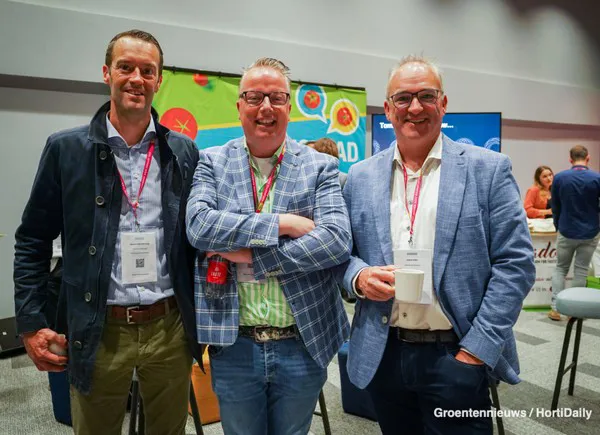
Ralph van der Caay, of TNI; Robert van den Berg, of Bakker Barendrecht, and Hans Derks, of Harvest House. Click here to see the full photo report
Rising costs
In contrast to 2019, energy was a very relevant topic, both in the presentations and the conversations, and that's because energy costs have skyrocketed. And many other costs linked to the growing and trading of tomatoes have also increased. It isn't easy to pass these costs on to other links in the chain, especially the first ones; that has already become clear. There is a lot of talk about the coming winter season, but growers are finding it difficult to give price indications, while retailers prefer to avoid the high costs associated with the lit and heated crops.
Southern Europe
The retailers setting their sights on the southern European productions may be disappointed, as product prices are also increasing in that region, not so much because of energy costs but also because other factors, like packaging and logistics, have also become more expensive. Besides, most of southern Europe's volumes, which are also not unlimited, have been sold under contract for many years. Growers cannot increase their production volumes overnight, nor will they want to do so if they are not sure they can sell the tomatoes at good prices. Interest in growing tomatoes further south or partnering with growers in, for example, North Africa is high.
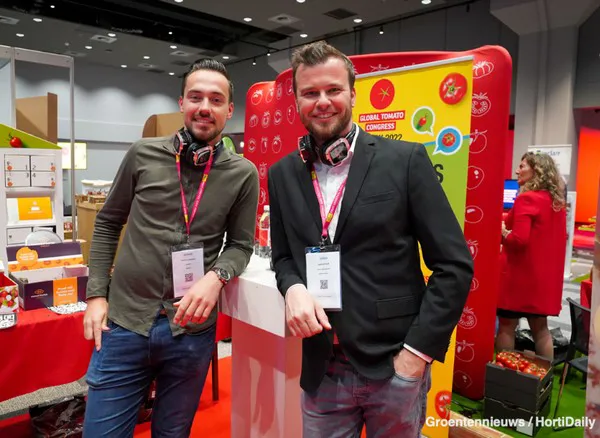
Yanick Verkade, of Al Dahra Baywa, and Erwin de Kok, of BASF. Click here to see the full photo report
International participation
Some producers from Southern Europe also gave a presentation. Michael Zaglere and Florian Gostner, from Italian grower Fri-El Green House, talked about geothermal energy and their plans for the future. The producers want to start growing tomatoes on an area of 30 hectares in 2023 and will also start drilling into the ground for geothermal energy this fall. Even further south, Al Dahra BayWa Agriculture is growing tomatoes in the desert. Dominik Hartl spoke about the difficult task of convincing supermarkets and consumers in the UAE of the quality of locally grown produce. The product imported from the Netherlands, for example, has a good reputation in the Arab country. Meanwhile, in Northern Europe, consumers usually prefer local produce.
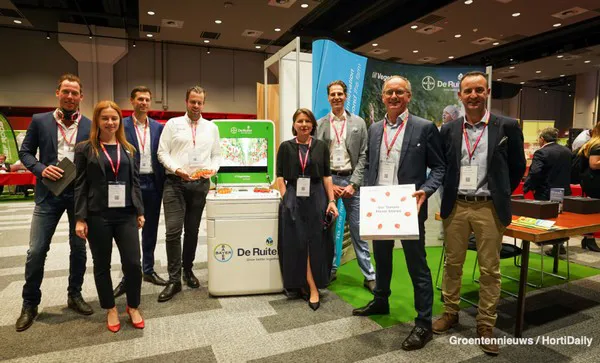
The Bayer team asked visitors about their preferences regarding different tomato varieties using a special toolbox. Click here to see the full photo report
Special toolbox
Between the various presentations, there was plenty of time to enjoy locally-grown tomatoes at this event organized by Fruitnet, as among the 25 or so exhibitors, there were several breeding companies and marketing companies that had brought tomatoes for tasting. In fact, during the presentation by breeder Bayer, visitors had the chance to taste tomatoes assisted by a specially developed new toolbox. The breeder goes to supermarkets with this special box full of tomatoes so that they can choose the right varieties for their customers. Seven flavor profiles have been described, taking into account several factors other than just the Brix value. With the toolbox, the breeder focuses on selecting varieties based on the facts.
